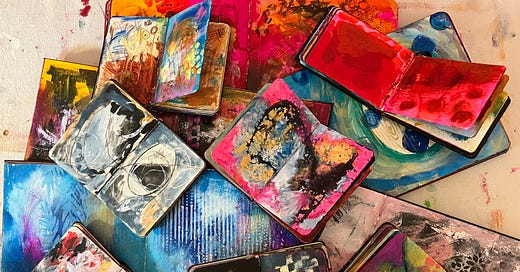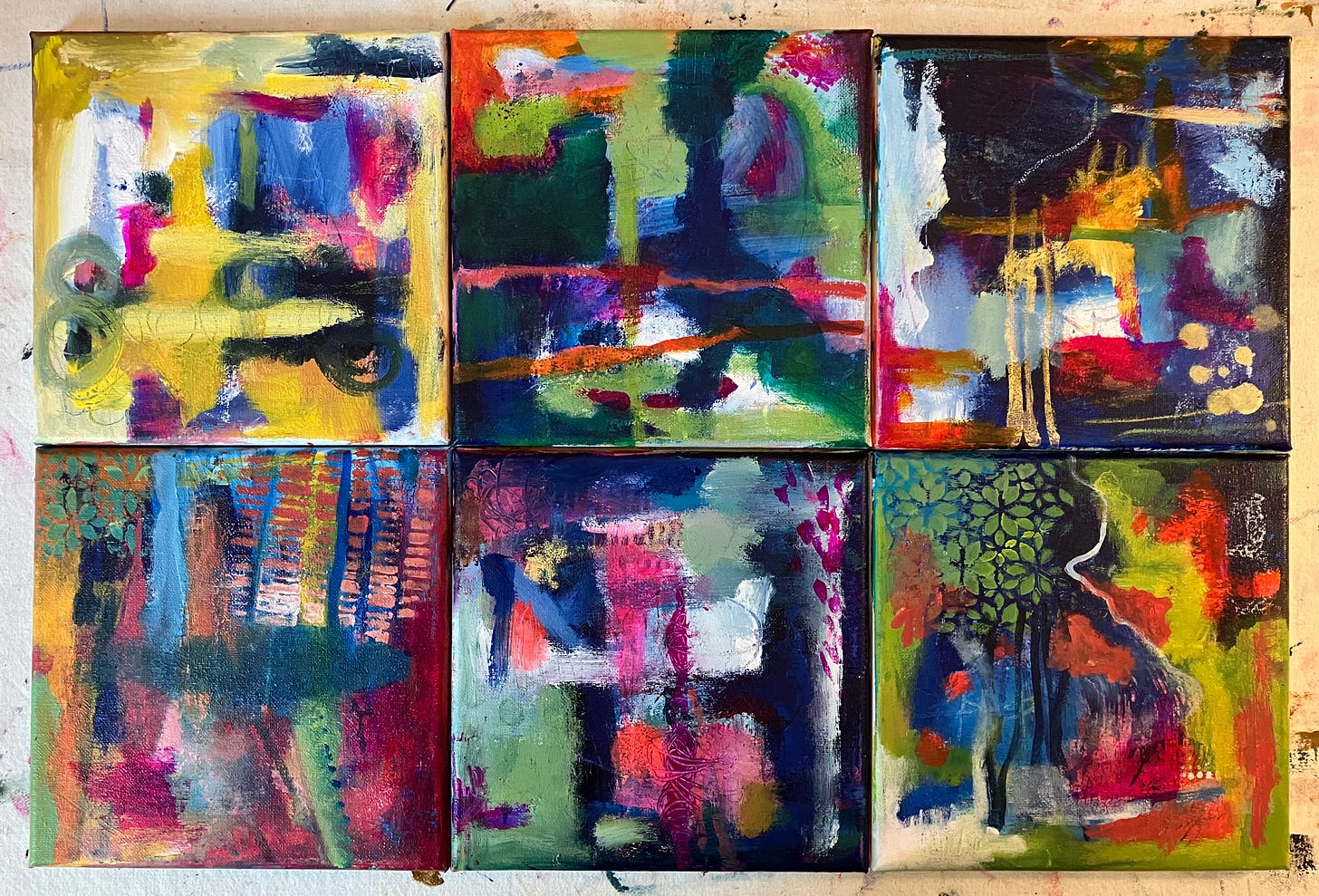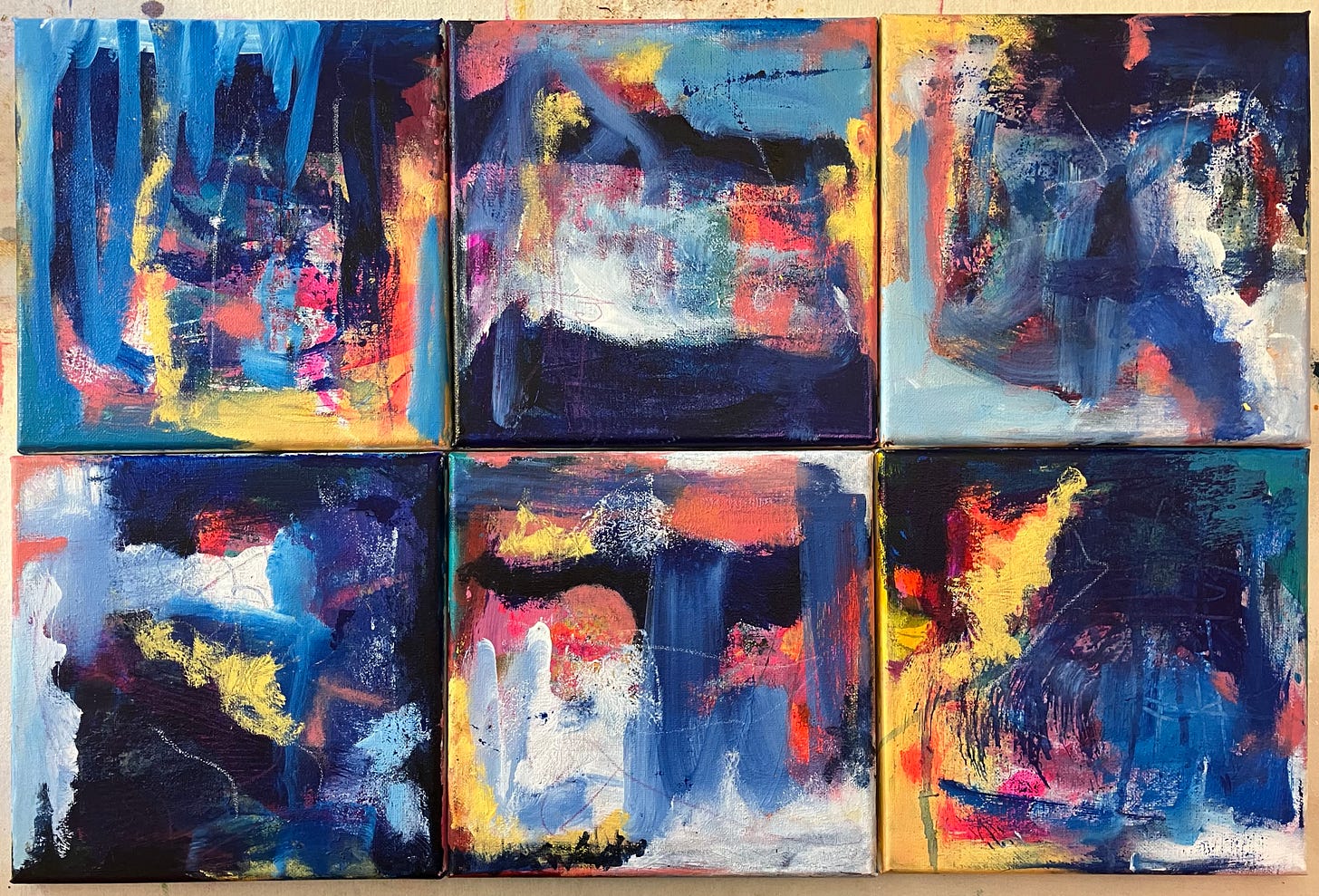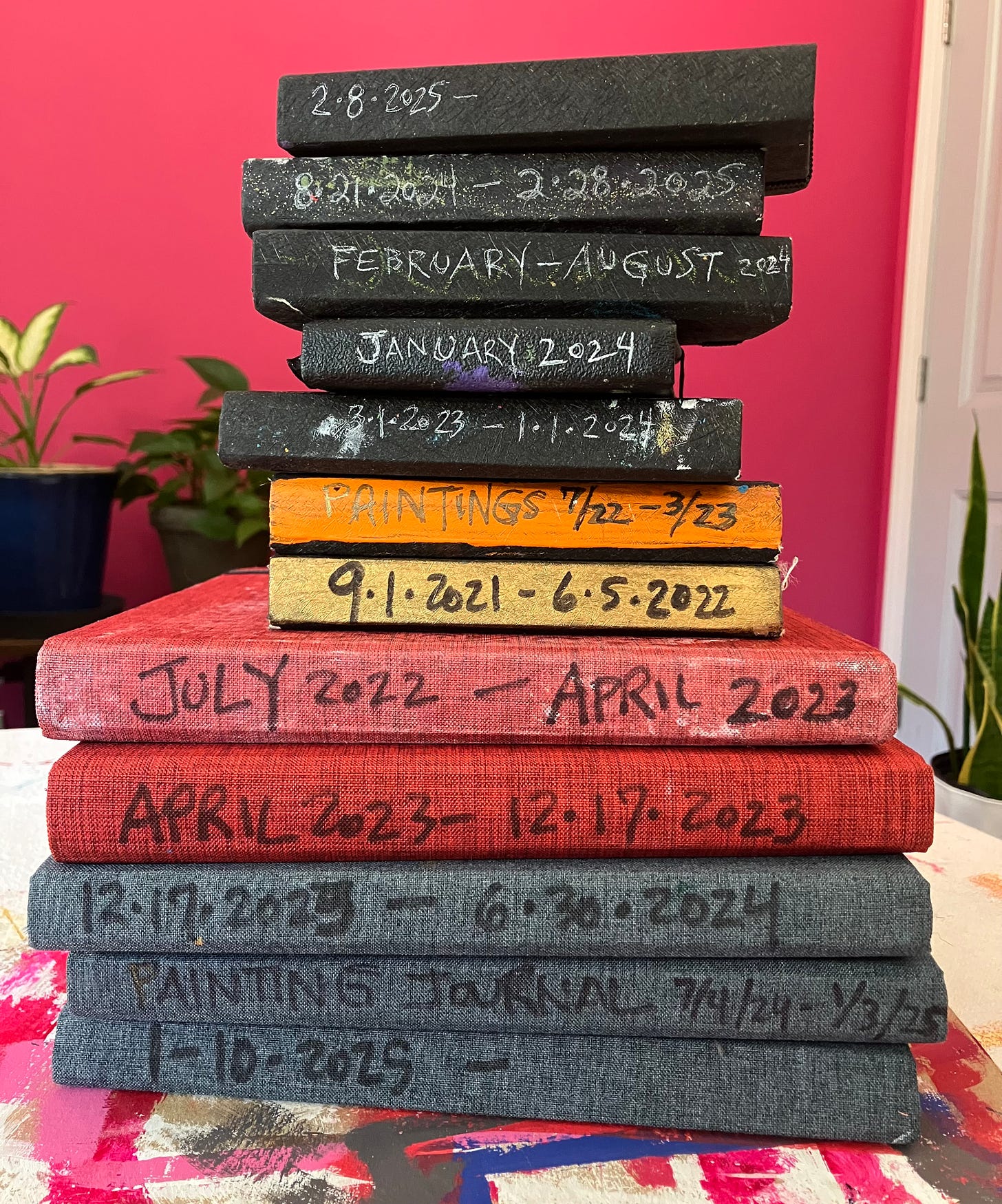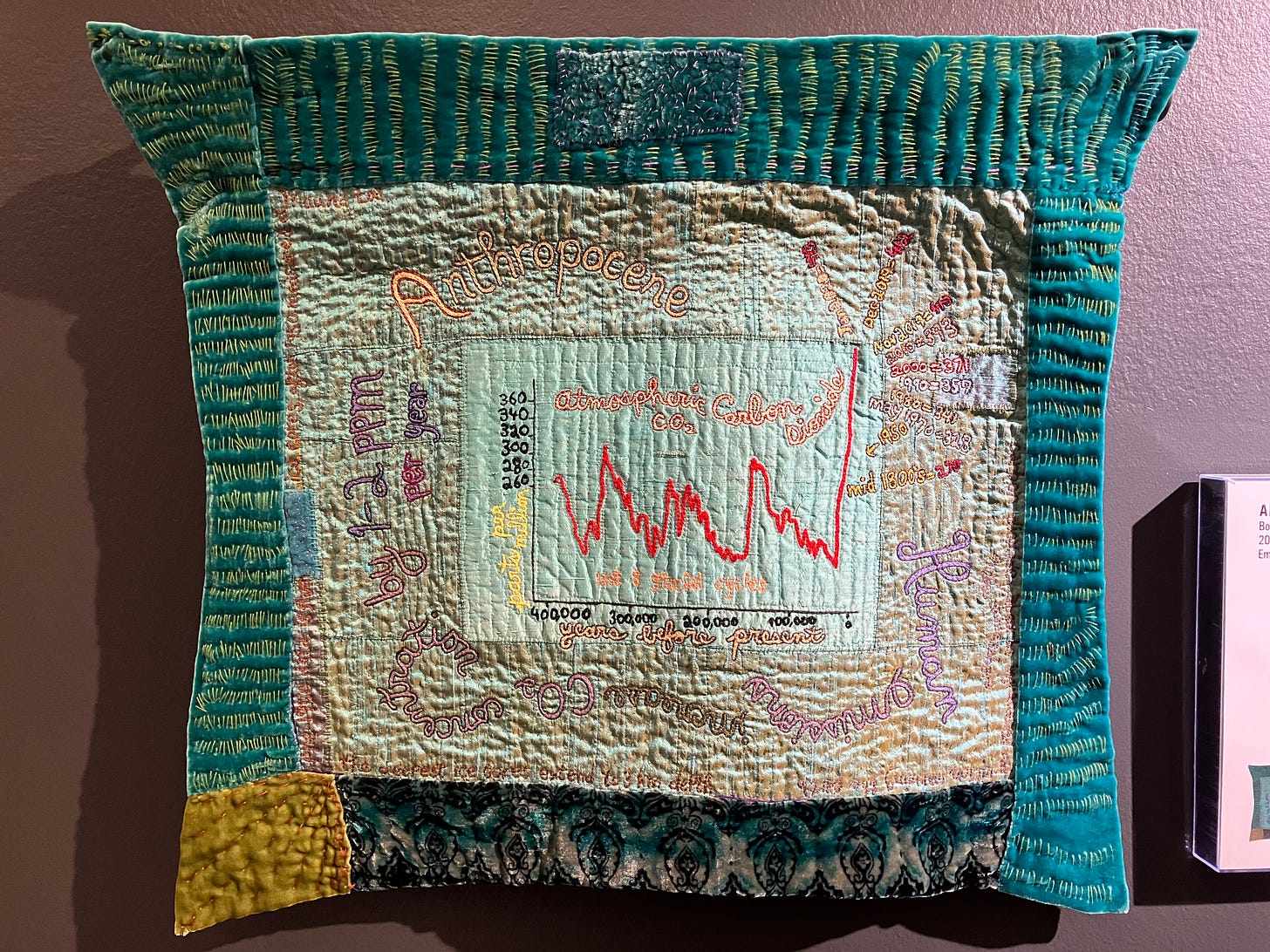Taking photos as I paint helps me become a better painter
Revisiting my stack of paint journals is oh so satisfying too.
Hello friends, as I’m sure you know, it’s exhausting to live in this country right now. Even so, I am not giving up or getting pessimistic, not in the least.
Instead I’m finding a new level of commitment to the work I’m choosing to put my energy into these days. Some of that work is my art and writing, and a lot of it is my work with private clients, students, and the Art of the Seer Academy.
I’ve been working on new paintings, completing old ones, and teaching a lot of classes, plus creating new ones.
Read on for this week’s art updates, plus a brief recap of several amazing shows I was fortunate to see this month at Atlanta art museums.
Thank you for being here, I always appreciate you for showing up.
Love, Kris
Find me online:
Visit my art website: KrisCahillArt.com.
Fine art prints of my work: Fine Art America shop
My Psychic Substack is here.
New work this month:
This group of six paintings is coming alive for me.

A helpful habit I’ve learned to use more consistently in my art making is to photograph my work as I’m painting it. When I remember to do it, I take photos after each painting session, no matter what stage the work is in currently.
I’ve found that taking a photo of something I’m working on helps me see it in a new way. The photo gives me a layer of distance, a neutral step back from being right up in my canvas. This is a good habit enforced by my weekly Friday painting days with my art friends. Another reason why painting with friends is a good idea - we encourage good habits in each other.
Keeping a record of the progress of an abstract painting is helpful to me as an artist. Plus I can show them to you.
Seeing the stages of work also helps me paint over what I’ve done without fear of losing an idea that was forming. I can always change it if I paint over the wrong thing.
I’m also grateful to the me that had the foresight to take photos as the paintings are opening up. I think of this as allowing them to breathe, and to tell me what’s next. I have learned to listen more consciously as an artist, to be more patient with my work in progress, let it breathe and take my time.
This photo below was taken after the first round of painting this group of six canvases. The image just above was the 2nd round, and the one at top of this article is what they all looked like this week.
I like starting off with a number of canvases or papers and painting them all together. An exercise I did in a workshop taught by Louise Fletcher last year helped me see the fun and value of working this way. Each piece becomes less ‘precious’ somehow, so I can just paint without the fear of wrecking the one piece I’m working on. Less precious = more real.
My paint journals continue to be a favorite tool, giving me the freedom and space to paint that I often don’t have the same way while working on a canvas. I work with two different paint journals at a time, both filled with watercolor paper. One is a small size 3 1/2” x 5 1/2” book, the other 8 1/2” square. I’ve filled nearly a dozen of these books now, and it’s satisfying as can be to flip through them and see my progress and changes as a painter.
Museums in Atlanta this month
I’ve been to two museums this past month, and I am still buzzing with inspiration and new ideas.
I saw two shows at the High Museum, and a show that closes today at the Museum of Design Atlanta.
‘Ryoji Ikeda: data-verse’ at the High Museum in Atlanta is a must see! March 7 – August 10, 2025
From the High Museum website: Ryoji Ikeda (born 1966, Gifu, Japan; active Paris and Kyoto) is one of the world’s leading composers and media artists. His art challenges how we understand the universe and our place in it through sound, light, materials, and scientific data composed into stimulating experiences of the unknown and the infinite. Ikeda’s immersive video projections feature visualizations of data extracted from mathematical theories and the study of quantum physics, among other categories of study and territories of knowledge.
I loved this show, and am newly fascinated with art that has data as an underlying theme. Ikeda’s work is multi media, and there are images in another gallery that are taken from his video. I happened to wear an outfit that matched data-verse, because of course I did.
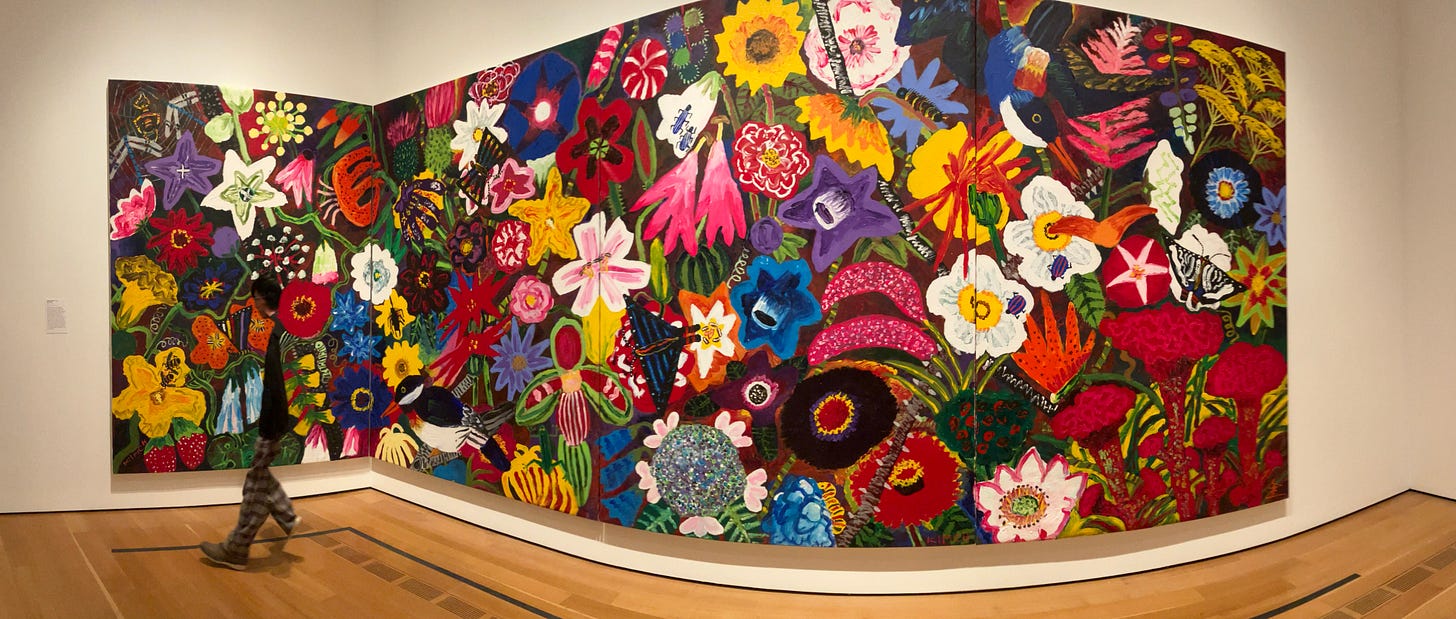
Kim Chong Hak, Painter of Seoraksan April 11 – November 2, 2025
High Museum website: By exploring the Korean landscape, nationhood, and diverse artistic, spiritual, and philosophical traditions, Kim has insisted on carving his own path of expression, transcending the boundaries of Korean history and connecting with American audiences. This painting: Pandemonium, 2018
I loved seeing the glorious work of Kim Chong Hak, and learning about this artist and his history. Though you can’t see them, there were 4-5 children sitting on the gallery floor in front of this painting, making art. The High Museum gave out free art boxes to all kids vising the museum the day we were there, and kids could be seen all over the museum being inspired by the art they were sitting in front of. It made me so happy to see this!
‘THREADS of CHANGE: Design & Data’ at the Museum of Design Atlanta is an incredible show!
Sadly, it closes on May 25, which is today. If you’re in Atlanta this weekend, make a trek to Midtown to see this magnificent show.
MODA website: Experience the transformative power of textile art in THREADS of CHANGE an exhibition that explores the intricate connection between humanity and the natural world. By translating scientific data into striking textile installations, this exhibition brings vital environmental issues to life, inspiring action and fostering a deeper understanding of our planet. MODA Atlanta
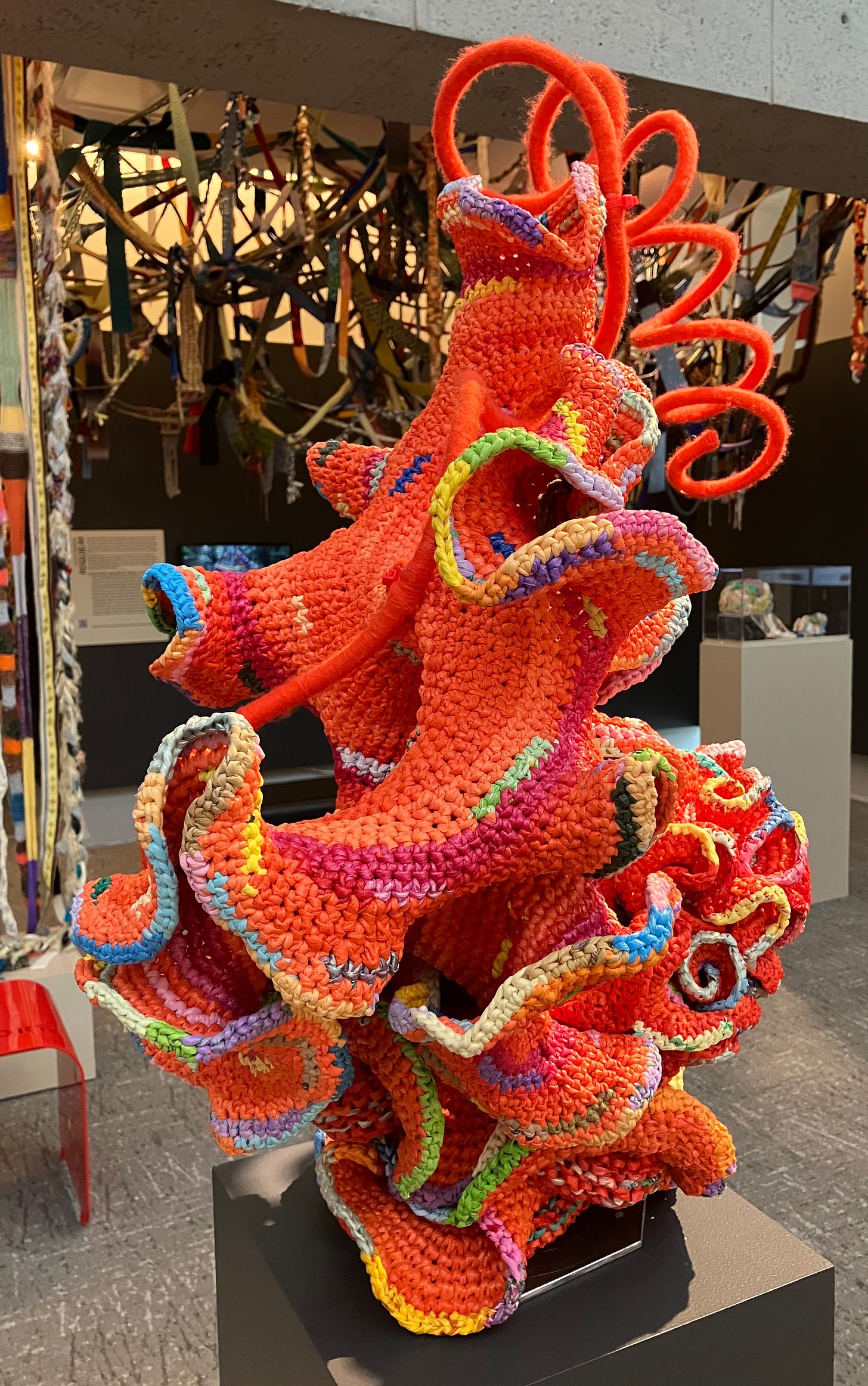

From the MODA website: Sandra M Sawatzky has made a 21st century work of art relating the saga of oil, global societal change, and energy transition through the power and beauty of 67 metres of hand embroidery.
Thank you for reading! Please share with your friends, and thank you. Love, Kris

